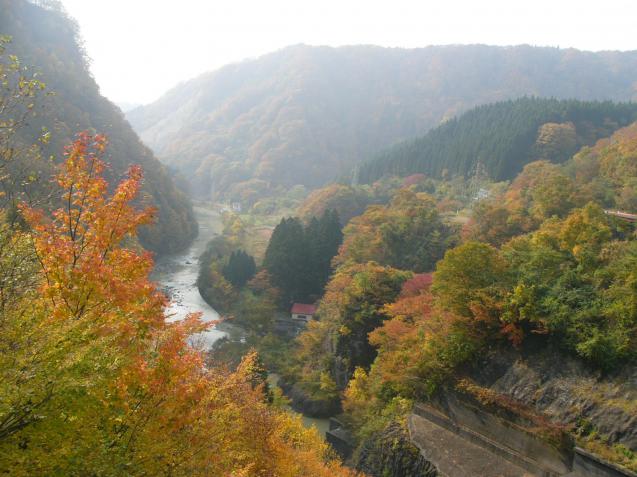
Shirakami Sanchi is an extensive mountain range straddling the border between Aomori and Akita prefectures in the northern Tohoku Region of Japan. The central core of Shirakami Sanchi is made up of the last virgin beech forests in Japan, for which the region was declared one of the country's first UNESCO World Heritage Sites in 1993. The heart of Shirakami Sanchi's forest is the protected World Heritage zone that is not usually visited by tourists.
Things to see
The main attraction of Shirakami Sanchi are the various hiking trails that lead through the forests to waterfalls, mountain peaks and lakes. The most popular hike leads to the Anmon Falls on the north eastern side of Shirakami Sanchi. The Anmon Falls are a set of three waterfalls that lie about 90 minutes into the valley from the trailhead (not accessible from late November to late April).
Another popular destination are the Juniko ("twelve lakes"), a series of small lakes and ponds connected by hiking trails, on the north western side of Shirakami Sanchi along the coast of the Sea of Japan. The area offers scenic day hiking, fishing, boating and camping around its lakes and ponds, one of which, Aoike, has enchanted looking, almost unnaturally blue water. There is also a small visitor center, the Juniko Eco-Museum Center Kokyokan, that explains about the area's beech forests.
Also be sure to check out the Nihon Canyon, Japan's miniature version of the Grand Canyon, with walls of colorful brown and grey rock found near the entrance to the Juniko. A walking trail connects the canyon with the Juniko's lakes and ponds.
Lastly, there are a few visitor centers around Shirakami Sanchi. The most informative of them are the World Heritage Conservation Center in Fujisato, Akita, which has a museum about the forests, and the larger Shirakami Sanchi Visitor Center between Hirosaki and the Anmon Falls which has an excellent museum with English information and an IMAX theater showing a 30 minute movie on the beech forests.
Shirakami Sanchi is best accessed from the north from Hirosaki in Aomori Prefecture, from the south from Noshiro in Akita Prefecture, about a one hour train ride north of Akita City, or through Odate-Noshiro Airport, which has daily flights from Tokyo's Haneda and Osaka's Itami Airports.
Hours and Fees
Shirakami-Sanchi Visitor Center
HOURS: 9:00 to 16:30 (November to March) 8:30 to 17:00 (April to October)
CLOSED: The second Monday of each month from April to December, every Monday and Thursday from January to March, December 29 to January 3
FEES: Free (IMAX movie 200 yen)
World Heritage Conservation Center - Fujisato
HOURS: 9:00 to 17:00 (April to December) 10:00 to 16:00 (January to March)
CLOSED: Tuesdays (or the following day if Tuesday is a national holiday), Mondays from January to March, New Year holidays
FEES: Free
Juniko Eco-Museum Center Kokyokan
HOURS: 9:00 to 17:00
CLOSED: Monday (or the following day if Monday is a national holiday), mid December to late April
FEES: Free
NOTE: Access to protected buffer zone, around the World Heritage site, requires a permit from the Aomori office of the Tohoku Regional Forest Office (tel. 017-781-2117, [3]), and the bureaucracy pretty much requires that you can handle Japanese or get someone to do it for you. However, the park's most popular attractions, including the Anmon-no-Taki Falls, do not require permits. And there is also a good trail along the border to the restricted zone
Submit Itinerary
Signup
- Sign Up
- Already a member? Login Now!
